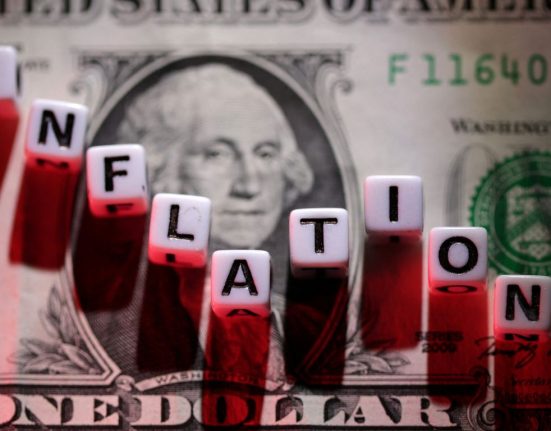Gold prices, represented by the XAU/USD currency pair, have faced a minor setback as they traded near the 100-day Simple Moving Average (SMA) at $1,962, recording a marginal 0.30% decline by the end of the week. Despite this dip, the precious metal still managed to secure weekly gains for the third consecutive week, indicating the resilience of gold as a safe-haven asset in a volatile and uncertain market environment.
The continued strength of the US Dollar has exerted downward pressure on gold prices, with recent economic data releases providing additional momentum. The US Department of Labor’s release of Initial Jobless Claims data revealed a lower figure of 228,000 people filing for unemployment benefits in the second week of July, surpassing market expectations set at 242,000. This positive employment indicator reflects the robust state of the US economy, potentially prompting the Federal Reserve (Fed) to maintain a more assertive stance.
As the US bond yield surged on Thursday, bolstering the US Dollar, the non-yielding gold faced selling pressure. All eyes are now on the upcoming Federal Open Market Committee (FOMC) decision next week. Market participants have already priced in a 25 basis point (bps) hike, and the strong labor market data has increased the likelihood of an additional hike beyond July, albeit at a relatively low probability of around 30%. Investors eagerly await Fed Chair Powell’s press conference for insights into forward guidance and potential future policy moves.
In the broader market context, the XAU/USD’s daily chart indicates a negative sentiment dominated by bearish tendencies. The Relative Strength Index (RSI) resides in positive territory above the midline but shows a negative divergence. Meanwhile, the Moving Average Convergence Divergence (MACD) displays fading green bars, signaling a potential exhaustion for bullish momentum.
Despite the recent bearish pressure, gold prices remain supported by the 20, 100, and 200-day Simple Moving Averages (SMA) on the broader trend. This suggests that the overall sentiment still leans in favor of the bulls.
Traders and investors should keep a close eye on key support and resistance levels as gold prices navigate the uncertain market terrain:
Support Levels:
$1,960 (100-day SMA)
$1,950
$1,936 (20-day SMA)
Resistance Levels:
$1,970
$1,987 (monthly high)
$2,000
The upcoming FOMC decision and the potential implications of interest rate hikes and forward guidance will significantly impact the movement of gold prices. Investors must carefully consider market dynamics and macroeconomic indicators to position themselves effectively.
Gold has always been regarded as a safe-haven asset during times of economic uncertainty and market volatility. Its value tends to rise when investors seek refuge from geopolitical tensions, financial crises, or inflationary pressures. Historically, gold has been a store of value, preserving wealth over time, and acting as a hedge against currency depreciation and other financial risks.
The ongoing strength of the US Dollar, which is often inversely correlated with gold prices, has put pressure on the precious metal in recent times. The US Dollar’s strength is driven by several factors, including the prospects of higher interest rates by the Federal Reserve, robust economic data, and safe-haven demand amid global uncertainties.
The US Federal Reserve’s monetary policy decisions play a crucial role in shaping gold prices. Interest rate hikes, or even the prospect of future rate hikes, tend to strengthen the US Dollar and put downward pressure on gold. On the other hand, a more dovish stance by the Fed, indicating accommodative monetary policy, can weaken the US Dollar and boost gold prices.
As the FOMC decision approaches, investors will closely scrutinize any hints or clues provided by Fed officials regarding the future path of monetary policy. Any indication of a more aggressive rate hike trajectory could lead to further strength in the US Dollar and a potential correction in gold prices.
Additionally, the FOMC’s forward guidance on inflation and economic growth could influence market expectations and impact gold prices. Higher inflation expectations or concerns about an overheating economy may increase demand for gold as an inflation hedge.
Geopolitical developments and global macroeconomic trends also play a significant role in shaping gold prices. Geopolitical tensions, trade disputes, and economic uncertainties can lead investors to seek safe-haven assets like gold. On the other hand, positive economic data and a favorable global economic outlook may reduce safe-haven demand for gold.
The ongoing COVID-19 pandemic continues to be a key factor influencing gold prices. While the global economy has shown signs of recovery, concerns about new variants and potential disruptions to economic activity persist. The uncertainty surrounding the pandemic’s trajectory can impact investor sentiment and drive demand for safe-haven assets like gold.
The supply-demand dynamics of the gold market also play a role in price movements. Gold mining production, central bank gold reserves, and jewelry demand are among the factors that can influence the supply and demand balance of gold.
In conclusion, gold prices, represented by the XAU/USD currency pair, have experienced a slight setback as the US Dollar continues to gain strength. Positive Jobless Claims data heightened expectations for potential rate hikes by the Federal Reserve in the upcoming FOMC decision. Despite the recent bearish momentum, gold prices remain supported by key moving averages, indicating a prevailing bullish trend. Traders will closely monitor support and resistance levels as they navigate the evolving market landscape, with gold’s trajectory hinging on central bank decisions and economic indicators. The outcome of the FOMC decision and subsequent market reactions will undoubtedly shape the future trajectory of this closely-watched currency pair. As always, caution and attentiveness are key in navigating the forex market, especially during periods of uncertainty and potential volatility.










